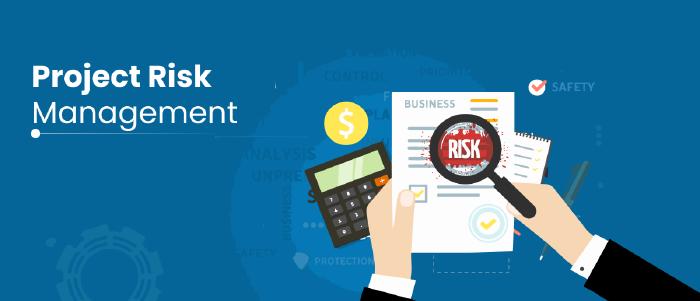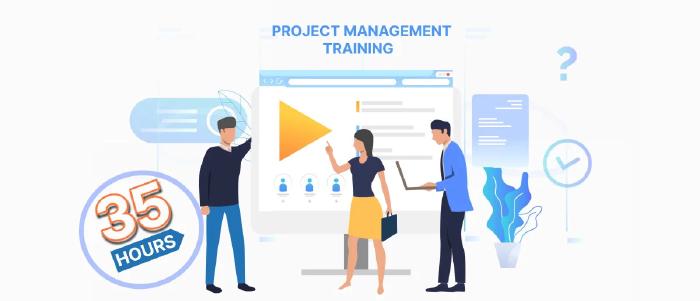
June 12 2023
5 min read

Jul
In the middle of every difficulty lies opportunity.
- Albert Einstein
Project risks are often associated with potential negative impacts that could jeopardize project success.
However, not all risks are harmful.
Positive risks, also known as opportunities, can bring about beneficial outcomes that enhance project performance and create new possibilities for success.
This article explores 7 examples of positive risks in project management, highlighting how they can be leveraged to drive innovation, efficiency, and overall project excellence.
Positive risks refer to uncertain events or circumstances that, if they occur, can favor project objectives.
These risks can arise from various sources, including technological advancements, market dynamics, internal processes, stakeholder involvement, and team capabilities.
Unlike negative risks, which are typically managed through risk mitigation strategies, positive risks are actively identified, evaluated, and exploited to maximize project outcomes.
Understanding risk management is not only about eliminating negative risks, but also leveraging the positive ones.
Positive risks, often overlooked in project management, have the potential to be game-changers.
Let’s explore 7 examples of positive risks so you can identify similar types of favorable risks when an opportunity arises.
During the execution of a project, project teams may come across unexpected market opportunities that can significantly impact the project’s success. These opportunities can arise from changes in customer needs, emerging trends, or unforeseen market gaps.
Example
Imagine a project team developing a fitness-tracking mobile application. During market research and user testing, they uncover a growing demand for a feature that enables users to connect and compete with friends in virtual fitness challenges.
This sudden opportunity prompts the project team to prioritize the development of this social connectivity feature. They allocate additional resources and adjust the project plan accordingly.
The team creates monetization opportunities by incorporating the social connectivity feature, such as offering premium challenges or establishing partnerships with fitness brands for promotional activities. As a result, the team can now expand the project’s scope, generate new revenue streams, and give the product a competitive advantage.
Another example of positive risks that project teams may encounter is the early completion of project milestones. When project tasks and deliverables are finished ahead of schedule, it presents a valuable opportunity to accelerate subsequent activities or take on additional tasks. It reduces the overall project duration, increases efficiency, and allows the project to be delivered sooner than expected.
Example:
Imagine a marketing campaign project to launch a new product in the market. As the project progresses, the team identifies that the campaign design can be completed early. The project manager, therefore, decides to optimize the campaign.
The project manager now plans for A/B testing and asks the campaign designers to develop an alternative version.
Secondly, the project team utilizes this newly-achieved time quota to generate a pre-launch survey with a small cohort of participants. While initially, due to time constraints, the data acquisition processes were not included in the plan. But now, with the survey data, the marketing team can adjust their campaign communication before the launch.
Integrating new technology into project processes can enhance efficiency, accuracy, and quality. For example, implementing a cloud-based collaboration platform can improve communication, data sharing, and project tracking across distributed teams.
Example:
In a construction project for a high-rise residential complex, the project manager identifies a positive risk by adopting advanced construction management software.
The software brings numerous benefits with features like 3D modeling, real-time project tracking, and automated scheduling.
3D modeling enables identifying design clashes early. Real-time project tracking improves transparency and communication, and the computerized scheduling streamlines resource allocation reduces conflicts, and optimizes construction workflows.
Innovative solutions and improvements emerge when risks spark creative problem-solving within a project team. Faced with unforeseen challenges or limitations, team members explore alternative approaches, leading to process improvements, new features, and enhanced project outcomes.
Example:
Let’s consider a company that was tasked with designing a new product, but due to supply chain disruptions, they faced a shortage of a critical component required for the project.
Instead of halting production or compromising on quality, the team saw an opportunity to explore alternative suppliers and materials.
This led to the discovery of a new, more cost-effective component that resolved the supply issue and improved the product’s performance, leading to increased customer satisfaction and market competitiveness.
Positive risks can provide opportunities for knowledge acquisition. Projects often involve learning and acquiring new skills or expertise. This knowledge can be valuable for the organization’s future projects, enabling continuous improvement and ensuring the availability of competent resources.
Example:
In a software development project for a cutting-edge mobile application, the team encounters a favorable risk—a new programming language promising enhanced performance and innovative features. The project manager seizes this opportunity, encouraging the developers to learn and incorporate the language.
The team invests time in mastering the language and deeply understanding its capabilities, best practices, and applications. The team can now use this new knowledge for future projects.
In project management, strategic partnership can be viewed as a lucrative example of positive risks. By forming collaborations with external entities such as vendors, suppliers, or other organizations, project teams can leverage complementary skills, resources, or expertise.
This not only strengthens the project’s outcomes but also lays the foundation for future collaboration and joint ventures, creating a win-win situation for all parties involved.
Example:
A positive risk arises in a pharmaceutical research project aiming to cure a complex disease: collaborating with a leading research institution renowned for molecular biology and genetics expertise.
The project manager establishes a strategic partnership, granting access to the institution’s advanced facilities, equipment, and researchers.
This collaboration combines the pharmaceutical company’s resources and drug development expertise with the institution’s understanding of disease mechanisms.
The partnership enhances research capabilities, accelerates treatment development, and improves efficiency and accuracy in preclinical trials.
It also strengthens credibility and reputation, gaining trust from regulatory bodies, investors, and healthcare professionals.
Process improvement is another example of positive risk that can significantly impact project management. It involves identifying opportunities to enhance existing processes, streamline workflows, and optimize efficiency. It could involve revisiting workflows, streamlining communication channels, adopting new technologies, or optimizing resource allocation.
Example:
In a manufacturing project optimizing production of a consumer product, the team identifies a positive risk—implementing lean manufacturing principles to streamline the assembly line.
The project manager introduces process improvement initiatives like value stream mapping, standardized procedures, and continuous improvement practices.
The team analyzes the production process, identifies bottlenecks, and implements changes to eliminate waste, reduce lead times, and improve efficiency.
By reconfiguring workstations, eliminating non-value-added activities, and using visual management techniques, production time significantly decreases, and overall productivity improves.
Opportunities don't happen. You create them.
- Chris Grosser
One of the most desired skills of project managers is the skill to convert challenges into opportunities. These qualities are partly inherent and partly acquired through training and hands-on experience in handling different projects.
If you are looking to advance your career in project management and gain competitive advantage in the job market, we highly recommend you check out Edbrick’s certification training courses on PMP®, Agile, PRINCE2® and more.
These courses are designed to give you maximum exposure to practical concept building through interactive discussions on theories as well as real-life case studies, simulations and more. The Edbrick trainers have an illustrious track record of guiding thousands of project management professionals and company project teams towards their goals.

June 12 2023
5 min read

September 25 2023
7 min read

September 5 2023
8 min read

August 9 2023
4 min read